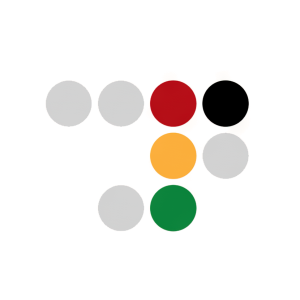Radware Report Reveals Shifting Attack Vectors in Credential Stuffing Campaigns
Rhea-AI Summary
Radware (NASDAQ: RDWR) has released a comprehensive research report revealing significant changes in credential stuffing attack patterns. The study analyzed 100 advanced credential stuffing configurations from the SilverBullet tool, highlighting a shift from simple password-spraying to sophisticated multi-stage attacks.
Key findings show that 94% of configurations use four or more business logic attack elements, while 83% implement API-targeting techniques. The technology/SaaS sector is the primary target (27%), with AI tools accounting for 44% of all technology targets. Notably, 51% of the analyzed configurations were created by just three advanced threat actors, each with over two years of specialized experience.
Positive
- Demonstrates Radware's leadership and expertise in cybersecurity research
- Provides valuable intelligence about emerging cyber threats
- Positions the company as a thought leader in application security
Negative
- Reveals increasing sophistication of cyber threats that could challenge Radware's security solutions
- Highlights potential vulnerabilities in current security approaches
News Market Reaction 1 Alert
On the day this news was published, RDWR declined 4.08%, reflecting a moderate negative market reaction.
Data tracked by StockTitan Argus on the day of publication.
MAHWAH, N.J., July 31, 2025 (GLOBE NEWSWIRE) -- Radware® (NASDAQ: RDWR), a global leader in application security and delivery solutions for multi-cloud environments, today released a new research report—The Invisible Breach: Business Logic Manipulation and API Exploitation in Credential Stuffing Attacks. The report reveals a paradigm shift in credential stuffing attacks. It underscores a fundamental transformation from volume-based attacks leveraging a series of repeated password attempts to sophisticated, multi-stage infiltration techniques.
“To bypass traditional defenses, modern credential stuffing attacks are shifting away from traditional password-spraying techniques in favor of business logic manipulation, cross-platform device spoofing, and strategic API exploitation,” said Arik Atar, senior cyber threat intelligence researcher at Radware. “The message for defending organizations is clear. To match this new reality, they must move beyond credential-centric controls to adopt security strategies that validate entire user journeys, correlate cross-request behavior, and detect suspicious patterns in business logic flows.”
Radware’s research examined 100 advanced credential stuffing configurations deployed through a well-known account takeover tool called SilverBullet.
Advanced attack methodologies
- Business logic attacks:
94% of configurations implement four or more business logic attack elements, with54% demonstrating advanced orchestration, using 13+ distinct techniques. - API exploitation:
83% of configurations contain explicit API-targeting techniques. - Multi-device spoofing:
24% of attack scripts alternate between two device types during execution, with71% employing cross-platform transitions, primarily between iOS and Windows.
Primary targets
- Industries: Technology/SaaS emerged as the primary target sector (
27% ), followed by financial services/government (16% ), and the travel/airline (13% ) sectors. - Online tools: There is a significant shift toward high-value AI tools (
44% of all technology targets), potentially exploited by spammers who engage in account cracking to create large-scale phishing content. In addition, corporate tools (30% ), including Microsoft 365, OneDrive, and Outlook, are likely targets for ransomware groups pursuing initial access to organizational systems.
Centralized threat landscape
- Concentration:
51% of the analyzed configurations, randomly collected over six months, were written by just three advanced threat actors: SVBCONFIGSMAKER, t.me/mrcombo1services, and @Magic_Ckg. - Specialization: Each threat actor had over two years of operational experience in distinct areas of specialization, including AI platform authentication bypass, mobile API exploitation, and Microsoft cloud services.
Radware’s complete report—The Invisible Breach: Business Logic Manipulation and API Exploitation in Credential Stuffing Attacks—can be downloaded here.
The research methodology was based on an analysis of 100 SilverBullet credential stuffing attack scripts to identify emerging trends, techniques, and tactics in modern account takeover (ATO) campaigns. The scripts were collected from Telegram channels of threat actors and published between December 2024 and May 2025.
About Radware
Radware® (NASDAQ: RDWR) is a global leader in application security and delivery solutions for multi-cloud environments. The company’s cloud application, infrastructure, and API security solutions use AI-driven algorithms for precise, hands-free, real-time protection from the most sophisticated web, application, and DDoS attacks, API abuse, and bad bots. Enterprises and carriers worldwide rely on Radware’s solutions to address evolving cybersecurity challenges and protect their brands and business operations while reducing costs. For more information, please visit the Radware website.
Radware encourages you to join our community and follow us on: Facebook, LinkedIn, Radware Blog, X, and YouTube.
©2025 Radware Ltd. All rights reserved. Any Radware products and solutions mentioned in this press release are protected by trademarks, patents, and pending patent applications of Radware in the U.S. and other countries. For more details, please see: https://www.radware.com/LegalNotice/. All other trademarks and names are property of their respective owners.
THIS PRESS RELEASE AND RADWARE’S THE INVISIBLE BREACH: BUSINESS LOGIC MANIPULATION AND API EXPLOITATION IN CREDENTIAL STUFFING ATTACKS REPORT ARE PROVIDED FOR INFORMATIONAL PURPOSES ONLY. THESE MATERIALS ARE NOT INTENDED TO BE AN INDICATOR OF RADWARE'S BUSINESS PERFORMANCE OR OPERATING RESULTS FOR ANY PRIOR, CURRENT, OR FUTURE PERIOD.
Radware believes the information in this document is accurate in all material respects as of its publication date. However, the information is provided without any express, statutory, or implied warranties and is subject to change without notice.
The contents of any website or hyperlinks mentioned in this press release are for informational purposes and the contents thereof are not part of this press release.
Safe Harbor Statement
This press release includes “forward-looking statements” within the meaning of the Private Securities Litigation Reform Act of 1995. Any statements made herein that are not statements of historical fact, including statements about Radware’s plans, outlook, beliefs, or opinions, are forward-looking statements. Generally, forward-looking statements may be identified by words such as “believes,” “expects,” “anticipates,” “intends,” “estimates,” “plans,” and similar expressions or future or conditional verbs such as “will,” “should,” “would,” “may,” and “could.” For example, when we say in this press release that to match this new reality, organizations must move beyond credential-centric controls to adopt security strategies that validate entire user journeys, correlate cross-request behavior, and detect suspicious patterns in business logic flows, we are using forward-looking statements. Because such statements deal with future events, they are subject to various risks and uncertainties, and actual results, expressed or implied by such forward-looking statements, could differ materially from Radware’s current forecasts and estimates. Factors that could cause or contribute to such differences include, but are not limited to: the impact of global economic conditions, including as a result of the state of war declared in Israel in October 2023 and instability in the Middle East, the war in Ukraine, tensions between China and Taiwan, financial and credit market fluctuations (including elevated interest rates), impacts from tariffs or other trade restrictions, inflation, and the potential for regional or global recessions; our dependence on independent distributors to sell our products; our ability to manage our anticipated growth effectively; our business may be affected by sanctions, export controls, and similar measures, targeting Russia and other countries and territories, as well as other responses to Russia’s military conflict in Ukraine, including indefinite suspension of operations in Russia and dealings with Russian entities by many multi-national businesses across a variety of industries; the ability of vendors to provide our hardware platforms and components for the manufacture of our products; our ability to attract, train, and retain highly qualified personnel; intense competition in the market for cybersecurity and application delivery solutions and in our industry in general, and changes in the competitive landscape; our ability to develop new solutions and enhance existing solutions; the impact to our reputation and business in the event of real or perceived shortcomings, defects, or vulnerabilities in our solutions, if our end-users experience security breaches, or if our information technology systems and data, or those of our service providers and other contractors, are compromised by cyber-attackers or other malicious actors or by a critical system failure; our use of AI technologies that present regulatory, litigation, and reputational risks; risks related to the fact that our products must interoperate with operating systems, software applications and hardware that are developed by others; outages, interruptions, or delays in hosting services; the risks associated with our global operations, such as difficulties and costs of staffing and managing foreign operations, compliance costs arising from host country laws or regulations, partial or total expropriation, export duties and quotas, local tax exposure, economic or political instability, including as a result of insurrection, war, natural disasters, and major environmental, climate, or public health concerns; our net losses in the past and the possibility that we may incur losses in the future; a slowdown in the growth of the cybersecurity and application delivery solutions market or in the development of the market for our cloud-based solutions; long sales cycles for our solutions; risks and uncertainties relating to acquisitions or other investments; risks associated with doing business in countries with a history of corruption or with foreign governments; changes in foreign currency exchange rates; risks associated with undetected defects or errors in our products; our ability to protect our proprietary technology; intellectual property infringement claims made by third parties; laws, regulations, and industry standards affecting our business; compliance with open source and third-party licenses; complications with the design or implementation of our new enterprise resource planning (“ERP”) system; our reliance on information technology systems; our ESG disclosures and initiatives; and other factors and risks over which we may have little or no control. This list is intended to identify only certain of the principal factors that could cause actual results to differ. For a more detailed description of the risks and uncertainties affecting Radware, refer to Radware’s Annual Report on Form 20-F, filed with the Securities and Exchange Commission (SEC), and the other risk factors discussed from time to time by Radware in reports filed with, or furnished to, the SEC. Forward-looking statements speak only as of the date on which they are made and, except as required by applicable law, Radware undertakes no commitment to revise or update any forward-looking statement in order to reflect events or circumstances after the date any such statement is made. Radware’s public filings are available from the SEC’s website at www.sec.gov or may be obtained on Radware’s website at www.radware.com.











